Estimated reading time: 4 minutes
It’s common, particularly after rain, to see some brown rot developing in your fruit. Stone fruit is very vulnerable, especially apricots.
However, you might also see it in peaches, nectarines, plums, or cherries.
Related Articles
Fruit tree leaves: bonus or problem?
Should you let the leaves from your fruit tree stay on the ground in autumn, or are you just asking for trouble? We’ll help you decide.
Should you spray your fruit trees in autumn?
Spraying fruit trees should always be kept to a minimum to protect soil health, but sometimes a spray in autumn is the right thing to do.
Natural fertility for fruit trees in Autumn
Autumn is a great time to apply some natural fertility to your fruit trees before they go to sleep for the winter.
Brown rot weather
You might have noticed that your fruit gets brown rot some years, but not others.
Ever wondered why?
One of the main factors is the weather. Fungal diseases like (and in fact, need) moist conditions to thrive. Even though gardeners often welcome rain to water the garden, dry weather is great for growing fruit!
Warm, rainy weather is such a risk to fruit growers that the Bureau of Meteorology even issues brown rot warnings. This is to let growers know that moist, warm conditions are on the way.
It’s a handy service to remind you to put your preventive measures in place.
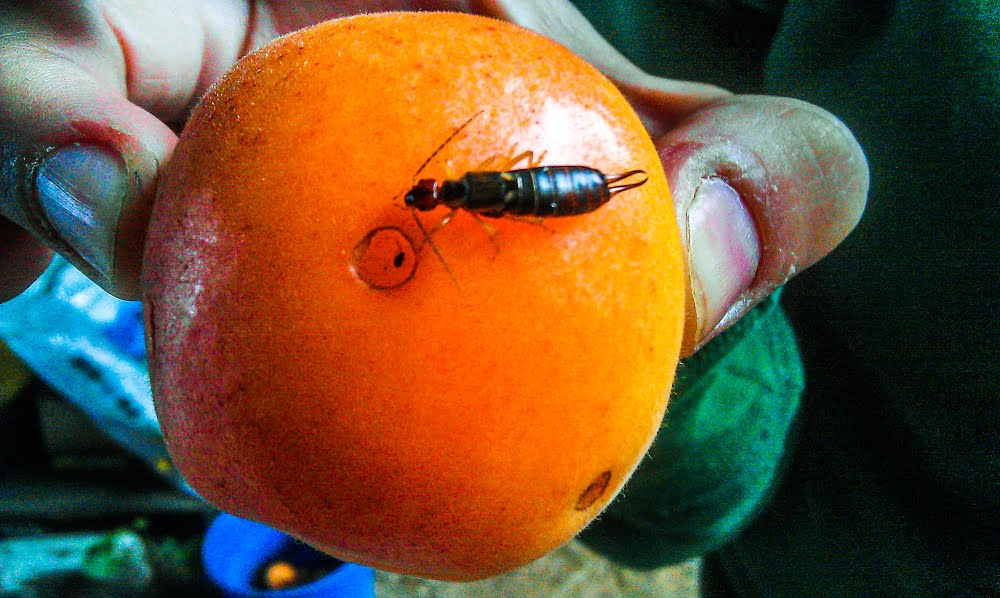
Insects and brown rot
Notice how the brown rot often starts around a hole as you can see in the photo at the top of this blog?
The holes might be caused by any number of insect pests. Some of the main culprits are a tiny pest called Carpophilus beetle, garden weevils, or in this case, earwigs.
How do we know? Because earwigs classically leave tell-tale round holes in fruit that you can see in the photo.
Insects aren’t always the source of the disease. Brown rot spores may already be in the tree because it’s the same disease that causes Blossom blight in spring.
Blossom blight not only infects flowers but can also infect the wood in the tree. If you had Blossom blight, there’s an increased chance your fruit may also get Brown rot.
However, insects can also spread the disease around. They carry brown rot spores with them and infect the fruit when they eat it.
The combination of a small hole in the fruit, and a bit of rain can lead to a bit of a brown rot outbreak in your fruit tree.
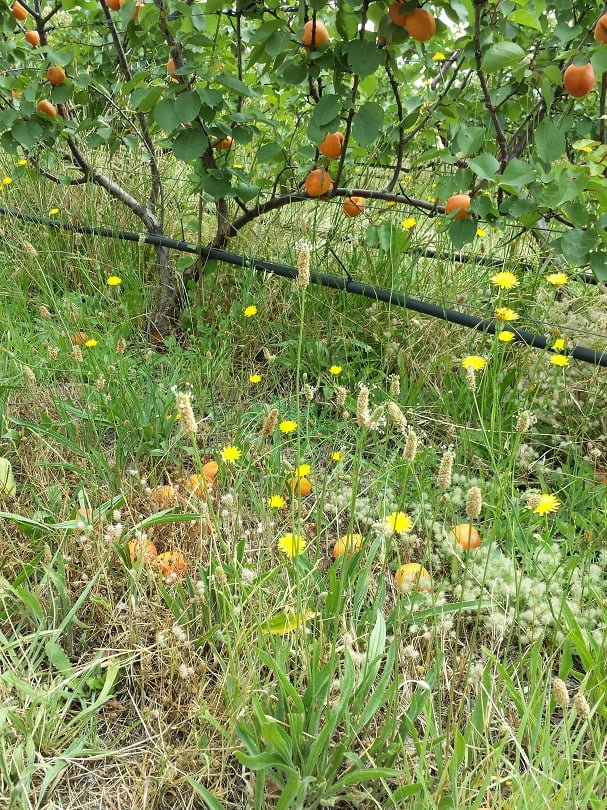
Hygiene is really important
A lot of fruit that’s been infected with brown rot tends to fall to the ground. The infection can rapidly get worse until the fruit is completely covered by rot. This creates a lovely reservoir of spores on the ground which can splash up and infect any healthy fruit that remains on the tree.
Therefore, be sure to clean up any fallen fruit from the ground. If they’re not too far gone, you should be able to cut out the rotten part and eat or cook the fruit.
If they’re not good enough to eat, they can safely go in the compost, or animals like goats or chooks will love to eat them. This will help stop the spread of the disease this season. It will also help keep the tree disease-free next year.
It’s essential to remove any rotten fruit that you see in the tree, to stop the disease from spreading from one piece of fruit to another. Pieces of fruit that are touching are particularly vulnerable.
How to prevent brown rot from developing
Preventing brown rot, like all fruit tree disease management, relies on the 8 principles of disease prevention:
- Love your soil
- Prevention is easier than cure
- Protect the predators
- Encourage variety in your garden
- Hygiene, hygiene, hygiene
- Maintain your trees
- Monitor your trees regularly
- Plan your fruit tree garden.
How do you apply these principles to Brown rot? Luckily, you have a big “toolbox” of preventive measures. It starts with pruning your tree correctly to allow for good airflow, which helps the fruit dry quickly in wet weather.
Next, comes proper fruit thinning. If the fruit is not touching each other as it’s growing, it’s much harder for the disease to spread. Preventive spraying is also key, especially in wet years.
Lastly, garden hygiene is your friend. Removing infected fruit, cutting out infected wood, and preventing crawling insects from biting the fruit will all help.
Is it too late to prevent brown rot if I’ve already got it?
Luckily, the answer is no!
Some fungal diseases are untreatable once you have them. Leaf curl in peaches and nectarines is a classic example. But others, like brown rot, are definitely worth treating to stop them from spreading and getting worse.
The main solution is to use a “cover spray” of an allowable organic fungicide. We prefer sulphur, because it’s one of the least harmful, it’s relatively easy to use, and (if you use the right type) it can be very effective.
Related Articles
Fruit tree leaves: bonus or problem?
Should you let the leaves from your fruit tree stay on the ground in autumn, or are you just asking for trouble? We’ll help you decide.
Should you spray your fruit trees in autumn?
Spraying fruit trees should always be kept to a minimum to protect soil health, but sometimes a spray in autumn is the right thing to do.
Natural fertility for fruit trees in Autumn
Autumn is a great time to apply some natural fertility to your fruit trees before they go to sleep for the winter.

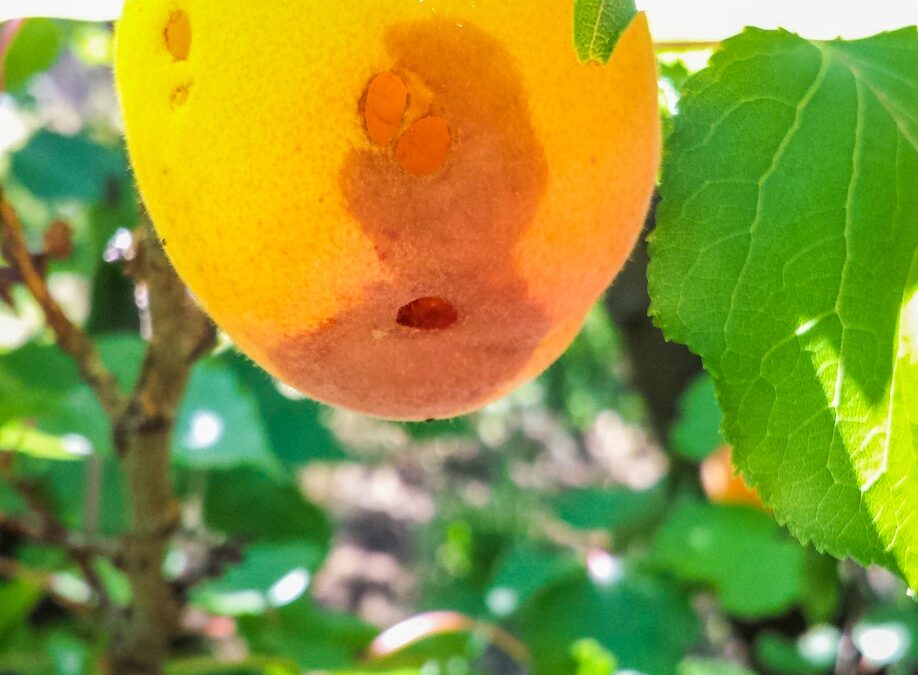
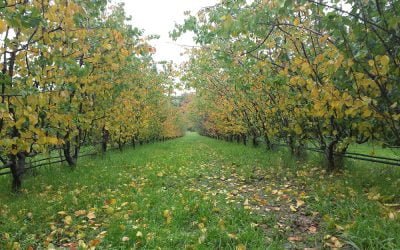
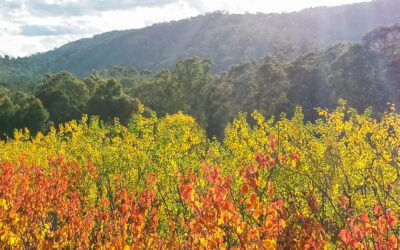



Thank you for sharing.
Our pleasure @Keven, glad you found it useful. Cheers, Katie and Hugh
My dwarf peach tree had leaf curl. My nectarine also had it for many years and the fruits have worms so had not had nectarine for years. For the first time, this year the cherries had worm in them. What is causing this? Ive had many small flies in the backyard and not sure if these are fruit flies.
I also have chickens and I have traps for the flies.
What is the most effective method to treat this? Until now I have stayed away from spraying but may have to do that next season.
Thank you
Hi Norma, that sounds pretty terrible, but don’t give up! Each of these problems is fixable, you just need specific information so you can take the right action at the right time. Leaf curl is usually preventable if you spray at the right time – the trick is that the right time can be different for different varieties. Fruit fly – it’s important to make sure you have the right traps out for them, and you get a positive ID on the worms to make sure what you’re dealing with. We have different short courses that will help with each course, but we really recommend you do our webinar on pests and diseases – https://growgreatfruit.com/pest-and-disease-webinar/, and take up our trial offer to try out the GGF program. We can definitely help!